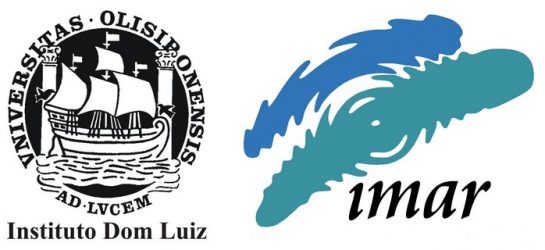Tarefa 6: Estimativa de níveis sonoros
Estimation of sound levels
This task will address three major questions: i) to measure fin whale vocalizations absolute sound levels; ii) on the use of average sound levels to infer fin whale calling densities; iii) extend the work already done by Romagosa et al. (2017) on the acoustic environmental noise to the Lucky Strike area, 300 km SW of Faial Island. Sound levels in the frequency band of fin whale vocalizations can be used to make a direct measurement of cue density that can be converted to population density provided a cue rate can be estimated (Mellinger et al., 2014). This method has the advantage of providing a measure without the need of individual calls? detection and ranging.
Few studies estimating fin whale call source levels have been undertaken (e.g. Širovi?, et al., 2007), due in large part to the difficulty in acquiring a set of calls where the positions of both the whale and the acoustic recorder are accurately known. The source level of a fin whale call can be used also to help distinguish between multipath arrivals and to constrain the range to a calling whale measured on a single instrument (McDonald and Fox, 1999), an issue discussed in task 5.
The Azores archipelago is an important migratory and feeding habitat for fin whales en route to summering grounds in northern Atlantic waters. High levels of low frequency noise in this area could displace whales or interfere with foraging behaviour, impacting energy intake during a critical stage of their annual cycle (Romagosa et al., 2017). It is thus important to assess the impact of anthropogenic noise on vocalization behaviour (e.g. Nowacek et al., 2007).
Sound levels can also be estimates from the vertical ground velocity but one additional difficulty needs to be addressed (Weirathmueller et al., 2013): the sound pressure is converted at the sea bottom in P and S waves and the reflection and transmission coefficients depend on the elastic properties and structure of the sea bottom.
In this task we will use long term data already collected in the Azores archipelago by hydrophones and OBS to measure: i) the background ambient noise level; ii) the ambient sound level in the frequency band of fin whale vocalizations; iii) the sound level of individual notes when ranges are available. The propagation model required to compute propagation loss and infer cue density will be computed by the ray tracing method of Hovem (2013) that accounts for an irregular bathymetry and uses 1D model for the sound speed in the ocean. Methods to infer the elastic properties of the sea floor that are required to model the physics of the water sea bottom interaction will be tested and applied to the data recorded previously. This study will address some of difficulties on the use of hydrophone multipath data and vertical ground velocity data to infer sound levels and ranges. The new data obtained in tasks 1 & 2 and analysed in task 3 will provide the control dataset to test, calibrate and validate the methodologies developed.

